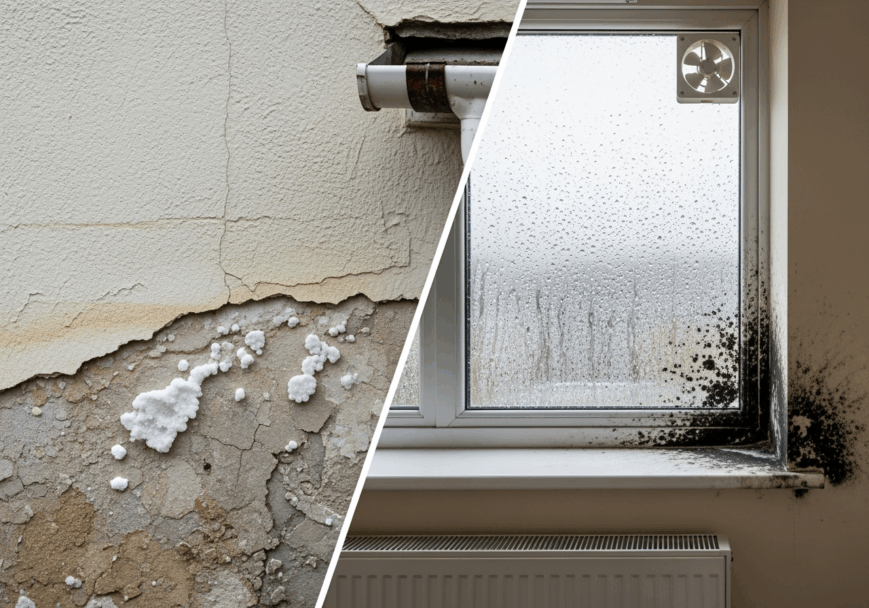Discovering moisture in a property can be worrying, but not all damp problems are the same. Two of the most common issues we see at Websters Surveyors are damp and condensation. While they might look similar at first glance—peeling paint, mould patches, or a musty smell—the causes, solutions, and risks can be very different. Here’s how to tell them apart and what you can do about each.
What is Condensation?
- Cause: Condensation happens when warm, moist air meets a cold surface (like a window or an outside wall), causing water droplets to form.
- Common Signs: Water droplets on windows, black mould in corners or behind furniture, and dampness in bathrooms or kitchens.
- Typical Locations: Bedrooms, bathrooms, kitchens, or anywhere with poor ventilation and high humidity.
- Solution: Improve ventilation (open windows, use extractor fans), reduce indoor moisture (dry clothes outside, use lids on pans), and keep rooms warm to reduce cold surfaces.
What is Damp?
- Cause: Damp refers to moisture entering your home from outside or from the ground. The main types are rising damp (from the ground up), penetrating damp (through walls or roofs), and plumbing leaks.
- Common Signs: Tide marks on walls, crumbling plaster, salt deposits, persistent wet patches, or a musty odour.
- Typical Locations: Lower parts of walls (rising damp), external walls and ceilings (penetrating damp), or near plumbing fixtures (leaks).
- Solution: Address the source—repair leaking gutters, fix roof tiles, improve damp-proofing, or repair plumbing. Professional diagnosis is often needed to distinguish between types of damp.
Why Does the Difference Matter?
Treating condensation as damp (or vice versa) can waste money and fail to solve the problem. For example, installing a new damp-proof course won’t help if condensation is the culprit. Accurate diagnosis is key to effective, long-lasting solutions.
How Websters Surveyors Can Help
In our Surveys, we use moisture meters, often known as damp meters to detect moisture in a property. The ones we use are far more reliable than the low-level mass produced ones that we find some clients have. Our Surveyors are also trained on how to use them and not be fooled by false positive readings.
We seek to identify both damp and condensation in our Home Surveys and we’ll report on what we find, ensuring that our clients are in an informed position so they can decide what to do next on their purchase.



